KNOWLEDGESTREAM AT-A-GLANCE
Transforming the B2B Buying Experience
ABSTRACT
B2B sales are hard but buying is even harder. Today's buyer is being bombarded with a constant flow of emails, phone calls, and social touches which is creating lots of noise for buyers to pick out the signal that matters. We are looking to learn how organizations are using science and sincerity to 'rise above the noise' to create a better buying experience.
PARTICIPANTS















OBJECTIVES
1. Trends, priorities, and drivers: Gain a better understanding of trends, priorities, and drivers shaping our customers’
businesses.
2. Value Prop Validation: Validate SalesLoft’s value proposition and strategic direction, ensuring we are in sync with our markets’ needs and expectations.
3. Brainstorm Innovation: Review, assess, or brainstorm product direction and opportunities
4. Alignment on Business Is: Collaborate on shared business issues
End Date: Jan 16, 2019
CONTRIBUTIONS
ACTIVITY
301 Days
14 Themes
48 Contributors
965 Posts
736 Comments
564 Followers
OUTPUTS
11 Slide Deck
2 Blog Post
11 Video
CALLS ATTENDED
• 2018-08-30 14:54:30 - A recording of the Theme Interview was uploaded
• 2018-09-14 18:00:48 - A recording of the Theme Interview for Theme #7: "Sales Meetings" was uploaded
• 2018-10-03 14:41:51 - A recording of the Theme Interview for Theme #9: "Difficult meetings and diffusing tension" was uploaded
• 2018-10-26 19:24:31 - A recording of the Theme Interview for Theme #10: "2018 recap and 2019 predictions" was uploaded
THEME #1
Trends that will have significant impact revenue growth in 2018 and beyond
THEME SUMMARY
In order for B2B sales leaders to dominate they must embrace technology, invest in sales coaching, create a better selling experience and help buyers solve problems.
- Technology options are expanding and getting more advanced
- Humans still matter, scaling team productivity and investing in sales skills are critical
- Sales needs to raise above the noise and create a better selling experience
- Selling is hard, buying is even harder
THEME #2
Defining authentic selling in a technology-driven world
THEME SUMMARY
Authentic Selling is About Delivering a Better Sales Experience
- Authentic selling is about taking an empathetic and caring approach
- Authentic selling is about helping your buyer be a better buyer
- Authentic selling is about relevant personalization
- Authentic selling needs to be intentional in who you hire and how you train them
THEME #3
Sales Onboarding Best Practices and Lessons Learned
THEME SUMMARY
Setting your team up for success through effective onboarding.
- Training Matters - Just Not All At Once
- Focus on the sales experience - better the sales team better the revenue
- Role-playing To Ride-Alongs - Getting Ready To Soar
- Measure twice, cut once - Metrics that matter
Training Matters - Just Not All At Once
Focus on the sales experience - better the sales team better the revenue
Measure twice, cut once - Metrics Matter
THEME #4
Tracking Seller Effectiveness
THEME SUMMARY
Advise on how to consistently measure sales reps performance with KPIs, metrics and on-the-job management to ensure team success.
- Sales Effectiveness Is both Input and Output Metrics
- Leverage Technology To Know Where You Are
- Not One Way To Measure Effectiveness
SURVEYS
Sales Effectiveness Is both Input and Output Metrics
Measuring deal velocity is important because it not only helps you compare reps performance but also is an indicator of market readiness. If you see deal velocity slowing over a quarter, it may indicate slowing demand that requires a bigger, company level intervention.
In B2B sales, there are four things you must track for each rep: 1) Calls 2) Meetings Scheduled 3) Opportunities created 4) Deals closed
Leverage Technology To Know Where You Are
A digital platform that is accessible to be viewed by every commercial person but can only be inputted/edited by some key related persons. Such platform should integrate the CRM, SAP, Sales Force, Supply-Demand, and Project Management functionalities.
Increase the visibility of seller effectiveness - we call this "Commercial Vitality Dashboard", forecast ROI, manage risks, and measure investments/inputs
Not One Way To Do It
With complex sales, the standard metrics are not necessarily an accurate measure of effectiveness. Given the nature of complex sales, and the means by which effective sales reps develop each opportunity, comparing these measurements risks missing nuanced value that these sales reps are creating.
I think net new prospect and customer meetings is the best way to gauge selling effectiveness especially in the mid-to-enterprise markets. Why don't we measure it more explicitly?
THEME #5
Post Research Recap: Best Practices of Top Performing Sales Reps
THEME SUMMARY
Reps need to spend time on core selling activities since a lot of effort has been diverted to other tasks
- Core Selling Activities
- Success Factors of Top Sales Teams
Core Selling Activities
Sometimes sales reps did not spend enough time on core selling activities as there is a lack in time management. People try to hit the number without a plan but then this is just a hope. Furthermore administrative tasks take a lot of time.
When you analyze a breakdown of sales teams activities, everyone is usually horrified by the results because there is so little 'selling' being done.
THEME #6
Surviving in a Modern Procurement Environment
THEME SUMMARY
Surviving the Modern Procurement Environment
- There's a wide gap of perceived contribution of value between buyers and sellers
- Technology has changed the procurement game
- Buyer expectations have risen dramatically over the last few years and only those who meet these challenges will survive.
SURVEYS
Do the words 'partnership' and 'strategic supplier' really mean anything?
The first is a desired outcome of most B2B transactions, even for commodity items, but the later really only applies in cases where the offering meets a critical need defined by the buyer. Trying to be a "strategic supplier" when your service is closer to being a "necessary evil" is unrealistic.
Hard work and using the right resources will open up the right doors. Then with a good sales dialogue a true "partnership" or becoming a "strategic supplier" can truly happen.
Technology has changed the procurement game
Innovations in technology, the ease and efficiency of performing transactions, and the increase in B2B platforms have made them the preferred choice for many buyers. In fact, buyers are near 70% of the way through a purchasing process before contacting a sales person.
To stay relevant in the era of ecommerce, your services have to be differentiated from what can be obtained online. We cannot compete on pricing with the online platform. But we can provide better customer experience, support, education, etc to help customers achieve their goals.
Buyers' expectations have changed
Recent statistics by Forrester found that 74% of B2B buyers and sellers preferred to purchase products from websites and that 59% preferred not to interact with sales representatives. Today’s buyer holds the cards. They’ve done their research, read reviews and looked at comparison websites.
Buyers do more research than before. So sales needs to step up their game.. Research the decision maker, find out their real needs & don't insult them with products that don't. Harder? Yes. But not so different than the old days w/o technology to find out about companies & the decision makers.
THEME #7
Sales Meetings
THEME SUMMARY
Delivering a great meeting for both buyer and seller is easy in theory, quite difficult in practice.
- Buyers and sellers have different expectations
- Sales isn't always clear on what a great meeting should look like
- Delivering great meetings is a coachable skill
- Avoid buyer traps!
SURVEYS
A meeting with the owner of a major customer was planned for just after lunchtime. It became very clear that our customer had enjoyed a very large 'liquid lunch'. He was abusive and aggressive so I just said that we would return in the future when he was 'feeling better'.
This example is about knowing when to take a step back. Had he become even more abusive it might have been very difficult to maintain any future relationship.
Sellers: definitions for productive meetings
We always have to read cues to know whether the ask is real or are they just trying to pass the buck. Which is why I like it if they have actual relevant questions or concerns that they express and how much information they share about their needs and how the solution can help them.
This depends on number of factors. The most important factor for me is "What stage of the buying process is the buyer in?"
Coaching sellers to great meeting performance
Every meeting is a process, and evaluation makes the process complete. An effective assessment relies on accurate information and a full analysis of four key performance factors: meeting results, meeting process, participation/tone, and next steps.
I started my first two weeks shadowing another rep and learning how she does it. She also took the time to explain her process to me, educate me about the customer's preferences, how she positioned the product with different customers, etc. This knowledge transfer was very valuable.
Buyer traps to avoid
I used to despair when salespeople pulled out their laptop and asked to show their company presentation. "and on slide 79 is a photo of our founder outside the original factory in Bumfluff Arizona"
The supplier thought that they were sharing the business with another vendor, who also held the lion's share of the business. They offered incentives, extended payment terms, etc just to increase the % of their share. The truth was that they already held 100% of the business!
Buyers: expectations for productive meetings
Buyers only take a meeting if the supplier is outside of the 'transactional' category. Operational and Strategic suppliers can impact the business and deserve an appropriate amount of time. They will ask challenging questions about future pricing and product availability, so be prepared.
Take a meeting when you clarified your needs and how the seller can meet. Review your expectations in advance. Build trust and be transparent (these are fundamental from this side too). Set up a clear agenda covering the main topics. Ask the right questions, engage with the seller.
THEME #8
Meeting formats & tactics
THEME SUMMARY
Leading good meetings is relatively easy in theory, but much harder in practice. There are many details and tactics to master.
- Avoid Death by PowerPoint
- How to make the most of face-to-face meetings
- Alternative venues such as webconferencing and dial-in
- Entertainment and other unstructured meetings
SURVEYS
Is PowerPoint dead?
I typically run it by the client "If you are interested, I have a Powerpoint that we can use as a discussion guide." If the client gets excited about it, then ppt is a go, if the client wants a free-flowing discussion than I would use handouts to facilitate the discussion.
PowerPoint is not dead, but the creativity and lively sense matters now, for example how animation bring traction to the presentation. But we should also be very alert about how people will getting bored when presentation involve too much wordings and has too much slides.
In-person meetings
According to a study conducted by Verizon Business, meetings are the #1 time waster in the work place. They are often unorganized, have no purpose and go off-topic. It’s also no mistake that most of these meetings are missing a clear meeting agenda.
Good project management is key to ensure meeting success. I have an agenda that I share with the client, to help the client get a sense of what to expect. I capture notes and action items that I use to continue the follow-up discussion.
Phone and Web Meetings
The stage of the sales cycle defines whether the meeting should be in-person or phone/web. If you are in early stages where you are still prospecting the client and are trying to gauge interest, I think a phone call/web conference works well.
Usually I turn on the video during the first call with new colleagues or other persons that I never met., I think it is easier to start engaging with the other persons. It helps to break the first barriers.
Entertainment and other types of meetings
Entertainment and events are always beneficial, it supports in engaging out of the working environment and break more barriers. I had several valuable talks out of the working environment, during events and lunch/dinner and even just coffee break.
Entertainment is a just nice to have, but more and more clients nowadays look for the substances of the discussion and the meeting purpose. Subjectivity on whether they like the person or not is still valid too.
THEME #9
Difficult meetings and diffusing tension
THEME SUMMARY
Difficult and tense sales meetings are inevitable but, when approached correctly, can be used to grow rapport and strengthen the relationship.
- The positives of tension
- How to avoid or control tension
- Causes of tension
SURVEYS
Client wanted to kill a consulting program that had resulted in significant new net prospect meetings for sales, as well as authentic customer-centric marketing content for lead generation. It was a new year and marketing wanted to chase the next new shiny object, I set up a meeting with sales and marketing, I asked sales to review the programs that generated the most net new prospect meetings for them, they said mine did by a landslide, they further demanding that marketing kill every other program in the company before they touch this "Magnet Marketing Program" Marketing backed off and continued the program after seeing strong resistance to change this highly successful sales program. If I did not bring in sales, marketing would have killed the program as they were not held accountable for "New New Prospect Meetings" and sales was
Carola van der Linden wrote:
This week.. as we had an escalation with an important customer.
In these situations it good to take 1 step back and not let emotions take the lead. In this instance there were different interpretations of what was promised versus delivered. We analyzed the situation with taking both sides into consideration. In this case it was important to allow the customer to share his point of view without being interrupted . In addition we reviewed meeting minutes and other important documentation to assess where a misunderstanding could have happened. In these cases experience shows the main focus should not be about who is right but how can we find a solution that will make both parties happy. This is a strategic customer for us so its important that we manage the outcome carefully as the endgoal should be to have a happy customer. Today's customer -vendor relatiionship is very much about having a customer centric approach where the end goal is to create fans!
David Cottrell wrote:
Meetings without an element of tension probably aren't worth having. If I'm not actually asking for an order, the meeting usually involves some negotiation towards business. Such situations can always finish with a 'no' and are thus 'tense'.
The positives of tension
Tension is not universally bad, its main benefit might actually help a client channel frustration towards real solution with some velocity.
It highlights where issues may be , and this could be interesting for the topic you are dealing with ... or may be good signs of thing you will need to take into account when putting into action whatever has been decided in the meeting / workshop. It can push engagement in the discussion.
Causes of tension
Usually there's a dynamic equilibrium set up with clients. The pendulum swings both ways and (usually) no one party benefits all of the time. However, disagreements happen and they are usually over price issues.
Working together in a change environment where people are more and more acting for themselves before thinking about the community (we are a "selfie" society!) makes tension almost normal and maybe expected. Normal b/cit brings people out of their confort zone ... or threaten their personal interest
THEME #10
2018 recap and 2019 predictions
THEME SUMMARY
Several key trends emerged in 2018 and we make predictions of what's to come in 2019
- Global and Macro Trends
- Sales and Marketing Trends
Global and Macro Trends
Global warming and climate change - this will impact what products and services will be required, how will we administer them, etc. It might also define how we interact with our customers. Air travel is not environmentally friendly.
The water crisis will start impacting businesses depending on geo. South Africa and California are already seeing the effects. Although, this does not have a direct relation to sales, it will indirectly affect which businesses will survive, which new businesses will be created,, etc
Sales and Marketing Trends
Data and analytics is making inroads in sales and marketing, where data is being heavily used to predict customer buying habits, needs, trends, etc. Knowing what the customer needs is key to making a sale. So we are becoming more realistic about how to use data and how to combine it with Empathy.
Digital Transformation will lead to more and more automation. Companies will try to get as lean and efficient as possible by automating as many processes as possible. This will lead to rethink virtually any process and to try to trim the fat out of it.
THEME #11
What's left to learn about sales?
THEME SUMMARY
For all the progress the sales profession has made over the last few years, there's plenty more to improve.
- (Human) Emotional Intelligence
- Artificial Intelligence
- Identifying Prospect Intent
- Company-wide Alignment
Improving Emotional Intelligence
Children are the best sales people b/c they haven't experienced failure so they only know how to go after what they want with passion and enthusiasm. Remember what it meant to sell without fear of failure, add to that the element of active listening and empathy and we have a winning combination.
Solution Providers must start with "Helping Buyers be a Better Buyers" and then and only start to sell. Increasingly sales has to earn a right to pitch a buyer
What's left to learn about sales? The power shifts from the seller to the buyer and from outbound sales on the basis of 'push' to inbound on the basis of 'pull'. Successful sales professionals are therefore not intrusive but especially helpful.
Artificial Intelligence
AI will change the way we engage with our customers now versus 5 years from now will be very different. Empathy, needs assessment and solving problems will still be at the crux of the sales process, but we will likely have many tools at our disposal to help us do these tasks better and faster
There are many applications for AI which can be used to help train/coach the sales person to be more effective. For example using AI for behavioral and emotional analytics (software analyzes the audio real-time on a call between sales and customer/prospect) has shown to enhance revenue.
Identifying prospect intent
Help sellers identify the right customers, know their preferences so that they can provide better offerings. The sales process takes engagement, empathy and being able to identify the customer's needs.
A sale is so easy when the customer is ready to buy. On the other hand, it does not matter how awesome your product is, how well you try to sell, and how much you try to convince the customer that buying this product will change their life, if they are not ready to buy, nothing happens.
Sales reps don’t change people’s buying habits or circumstances. What they can do is accurately discover them and then attempt to create a sense of urgency.
Company-wide Alignment
The starting point is with the CEO, to evangelize Sales as the engine of the company; then build business functions including process, cross-functional metrics and systems within marketing, finance, legal, delivery, and customer satisfaction; to integrate support of the pre and post sales process.
I'd like to get better at aligning the entire company behind sales, not just by comp plans that have a large sales component but by culture which celebrates its sales team at the rank-and-file level, and gives sales the benefit of the doubt when faced with something that seems left-field.
THEME #12
Attitudes towards CRM
THEME SUMMARY
Sales teams' attitude towards CRM
- Benefits for salespeople
- Benefits for the company
- Challenges to widespread adoption
- How to improve CRM
Benefits for salespeople
Presents a very clear picture of my sales efforts. Seeing where my prospects sit in the sales funnel has immensely helped me in how I pitch and sell. It has also informed my engagement strategy. Prior to using CRM I dropped the ball on a few of my contacts.
If the rep uses the CRM daily, it will keep them well organized, and provides a real time compilation of action items, forecasts, internal and external correspondence, etc. Not doing so equates to less than goal performance without a comprehensive tool to keep the group and individual focused
Benefits for the company
Managers and execs benefit because it simplifies which stage each relationship belongs to, next steps etc. It prevents process duplication (e.g. multiple managers trying to engage a high net worth prospect simultaneously. And has the option of adding notes.
Use the tool for forecasts, reminders, action items for internal/external stakeholders, lead gen correspondence. It is a diary + non-human administrative assistant
working with several people in the same client is critical. Decisions are made by committee nowadays and every player needs to be on board. This is where CRM can really help.
Challenges to widespread adoption
The system is only as good as the data feed. Most of the CRM systems I've been involved with implementing have all suffered from poor data input. SAP data was used and was full of errors that required manual input by responsible salespeople to correct.
This means right from the get-go, sales feel aggrieved that they are have to spend a lot of time on a system that is supposed to make their life better.
How to improve CRM
Get stakeholders engaged rapidly. Account managers that believe they are exempt from reporting due to their great performance are challenging but for this tool to work best, everyone needs to be diligent about using it daily.
Instead of the current dashboard approach, shift to visualizing the factors that contributed to sales outcomes as the primary focus to follow the successful pathways, and to reinforce what works well in the selling and buying processes.
Over time, train the system to perform in-depth win/loss of the collected conversations, observations, and documented events, in an effort to continually refine and highlight those elements that contributed to the successful execution of the sale.
THEME #13
We had a great meeting, so why aren't they returning my calls?
THEME SUMMARY
You had a "great" meeting and then prospect goes completely silent. What happened and what should you do next?
- Why prospects go dark
- How sales can prevent prospects from going dark
- Tactics to resurrect dark prospects
Why prospects go dark
The prospect is not a decision maker, but a data collector The salesperson has not asked the necessary qualifying questions Salesperson is overly optimistic, which happens freqently The salesperson did not understand the buying decision making process and failed to align
Their boss changed their priorities and they don’t want to admit it They are simply busy and rude You're not high on their priority list, so they are chasing more urgent matters Competitors went in and changed the rule of the game Something happened and you are not needed anymore
Sometimes, sales reps talk with prospects that don’t completely believe they're facing the problem a product solves. Sharing more content about the problems they are experiencing is one tactic to educate prospects and increase prospect engagement.
How sales can prevent prospects from going dark
1. Get a structure in place for clear communication Agree on turnaround times and communication methods right away with your client. Ask if phone calls are better than emails. MIf they have days they know are more hectic or they know they’ll be unavailable, make note of those, too.
Use a checklist as a part of your sales process to include pre-call items such as match to ideal customer profile, what we know about the prospect's company and its structure, learning as much as we can and choosing the open from your relevant valid business reasons for a call,
You failed to correctly understand through proper prep for a call and developing a questioning strategy to uncover the presence of a need, and to align your selling process with the prospects buying decision making process.
Tactics to resurrect dark prospects
Identify an internal champion at the prospect to guide you. Alternatively, I many times have a colleague that either knows the prospect or can give me guidance/enlightenment on the situation. Plan B, after 2-4 wks I contact a higher level person that could offer some guidance.
Use instead of the standard breakup email, "It seems like this isn't a good fit for your company right now. I don't want to bother you unnecessarily, so I'll follow up in a few months to see if our goals are better aligned."
Best tip... video works great in this scenario. Make a video recapping the value you share with them and at the end simply ask "I thought we had a great meeting, how did I go awry?" People typically will respond. Worth a shot right?
THEME #14
Best practices for Sales Kickoffs



























